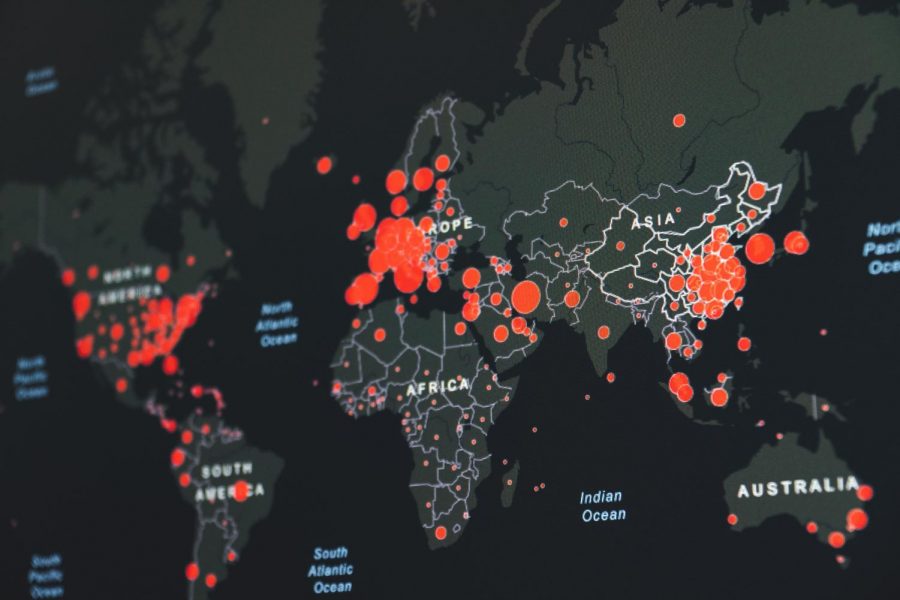Predicting the Next Pandemic
The unexpectedness of the global Covid-19 pandemic warns us of future unseen threats.
A map of COVID-19 outbreaks shows the extent to which the novel Coronavirus spread around the world.
The spread of COVID-19 around the globe was rapid, infecting thousands of people every day. How could anyone have foreseen such a horrific event?
Well, four years ago, researcher Kevin Olival traveled to Malaysian Borneo with the nonprofit research group EcoHealth Alliance (EHA), in order to trap and collect samples of body fluids from bats. There, they found about 781 unique variants of Coronavirus, previous to the current COVID-19 pandemic outbreak. That means there were 781 potential candidates for a spillover — instances of an animal virus jumping into human hosts — and 781 potential future outbreaks.
What is worse is that these infections had already spilled over to the human population. Due to the deforestation in Borneo, humans have been brought closer to bats and other wild animals. As they have come closer into contact with these animals during the past few decades, these viruses easily jumped from human to human and caused mini-outbreaks that went undetected. These undisclosed cases were warnings of a future outbreak that could go under the radar and spread without notice.
Another area of concern is the Amazon Rainforest, which shelters millions of virus-carrying animals.
Marcelo Gordo, along with the researchers in Fiocruz, have been studying monkeys for parasites and viruses, such as the Zika virus. They are concerned of a spillback — when infections pass from humans to animals — where the primates are infected by Zika. Unfortunately, humans are at risk from spillback as well. Primate populations infected with the Zika virus give the virus the opportunity to evolve and jump back to the human population. The monkeys will constantly recirculate Zika back to people, making the virus almost impossible to eliminate.
Once again, deforestation increases the likelihood of a spillover. By destroying the habitats of the wild animals in the Amazon, humans are forcing the primates to leave their homes and seek shelter closer to where we live. Being exposed to wild animals has the potential of infecting humans with numerous zoonotic diseases, known or unknown. Another outbreak might fester into a mass pandemic, just as the current global Coronavirus outbreak did.
The next pandemic may never come in our lifetimes, or there could be another one within the next decade or two. Predicting when the next pandemic will occur with certainty is impossible. However, adding preventative measures now is achievable. The destruction of forests transform habitats in a way that could bring vectors and viral hosts closer to human communities and increase the likelihood of spillover. As such, we can prevent a future pandemic by delaying our destruction of the forests.
The destruction of forests transform habitats in a way that could bring vectors and viral hosts closer to human communities and increase the likelihood of spillover. As such, we can prevent a future pandemic by delaying our destruction of the forests.
Nicole Hu is a Staff Reporter for 'The Science Survey.' She enjoys reading articles about new discoveries and the unknown. They are informative and allow...

